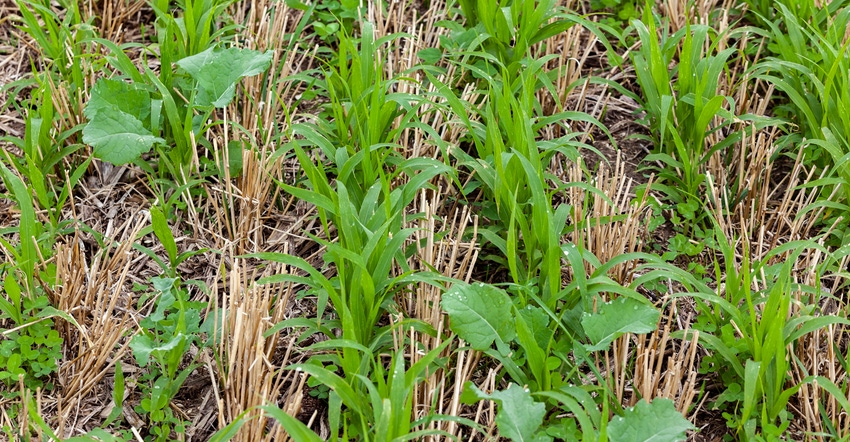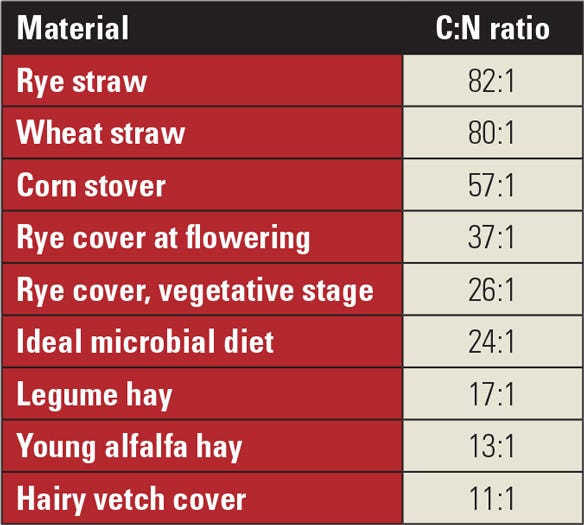June 9, 2021

Managing nitrogen is easy, right? In corn, we attempt to put on enough to maximize (economic) yield, but not so much as to leave money on the table at the end of the year — any extra leads to losses and environmental degradation. And lately, everyone “knows” that you can use a cover crop to manage the money crop, reduce soil losses and maybe build a little organic matter at the same time.
But I have had call after call telling me about the problems folks have with managing their cover crop. Insects are a frequent concern. This morning, it was voles. It either makes things too wet, or makes the ground too dry — but most forget that you also must manage nitrogen differently with cover crops to get the benefit for your corn without lost yield and without losses to your bottom line.
To me, it’s about understanding the carbon-to-nitrogen ratios of your organic material. Too high a C:N ratio and you steal N from your corn. Too low a C:N ratio and you have a very rapid breakdown of your organic material and potentially lose your ground cover.
I like to use the USDA’s Natural Resources Conservation Service tech bulletin on carbon-to-nitrogen ratios in cropping systems. The table outlines the C:N ratios of common crop residues and organic materials.

To start with, the publication points out that a C:N ration of 24:1 is the ideal microbial diet — think of that first — we are attempting to get conditions right for the soil microbes. It’s not only about our corn crop, but it also is about the soil environment where we put those corn roots.
Generally speaking, if our C:N ration is greater than that 24:1, then those microbes will have to get nitrogen from someplace so they can process the organic matter. If less than 24:1, then they are living the free and easy life, and excess N will be available to the corn crop we are growing.
Cereal rye
Let’s talk about using cereal rye as a cover crop. Timing of termination of that cover rye is going to be critical to avoid stealing nitrogen from corn. If we wait until late and have a mature rye plant, at 82:1 C:N ratio you will need to add extra nitrogen to feed the microbes, otherwise they will take the N away from the corn crop.
If you terminate rye at flowering, at 37:1, things are looking better, but you probably still need to add some extra N to keep from shorting your corn. But if we terminate early at the vegetative stage — with a 26:1 C:N ratio — our typical N rates should be good.
Our current N recommendations for corn in Ohio follow the same guidelines used by other states to the west of us in the Corn Belt. We use the Maximum Return to Nitrogen model, in the Corn Nitrogen Rate Calculator, based at Iowa State University: cnrc.agron.iastate.edu.
For us in Ohio, the “average” rate is 180 pounds of nitrogen per acre, but this changes with the price of nitrogen and the price per bushel. A recent check of the recommendations still put us at that 180 level, even with the higher corn price, because N has gone up in price, too.
The other way to manage nitrogen after a rye cover crop is to plant soybeans — no extra N needed.
Watters is an Ohio certified crop adviser and an associate professor at Ohio State University. Email him at [email protected].
You May Also Like




